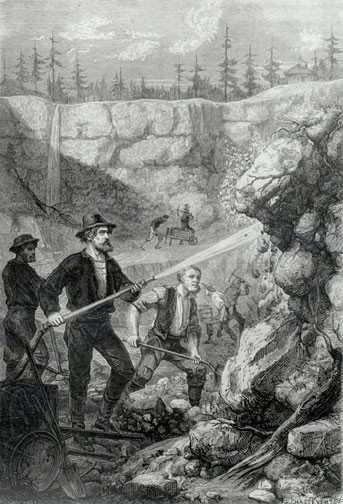Gold Rush: 1848–1860: Mining Techniques
 Lavage par la methode hydralique. 1862. J. Gauchard and G. Chassevent, artists. Steel engraving. Collection of Oakland Museum of California. Donors Acquisition Fund.
Lavage par la methode hydralique. 1862. J. Gauchard and G. Chassevent, artists. Steel engraving. Collection of Oakland Museum of California. Donors Acquisition Fund.
This image shows hydraulic mining, the process of shooting streams of water into the cliffs, dislodging dirt and rocks and, hopefully, gold. In this way, men imitated the natural process of rivers and streams slowly eroding cliffs and washing minerals away. The practice of hydraulic mining was a much more complicated one than that of a lone miner panning for gold. Hydraulic mining required expensive equipment and large numbers of men working together in order to collect the gold. This process was too advanced for the solitary miners who set out in search of gold in California. It required large corporations, who could afford to pay for all the costs associated with hydraulic mining.